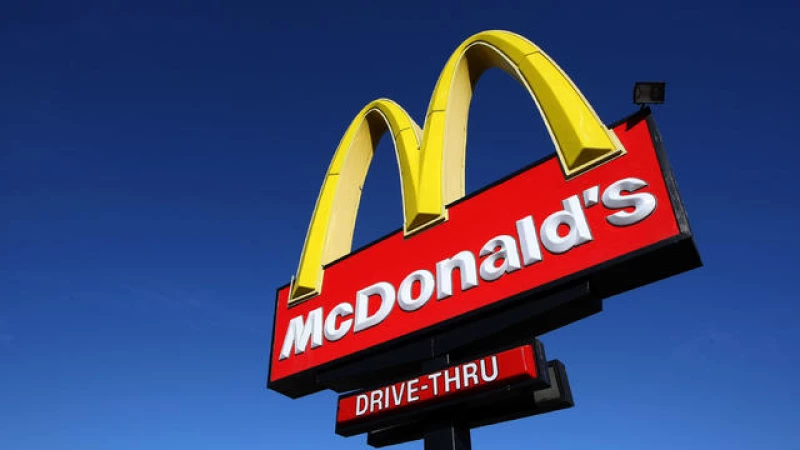Surge in Fast-Food Prices Causing Concern Among Budget-Conscious Consumers
Kevin Roberts remembers a time when a bacon cheeseburger, fries, and a drink from Five Guys only cost $10. However, on his recent visit to the fast-food chain, he was shocked to find that the food alone, without a beverage, now cost double that amount.
Roberts, 38, shared that he now only indulges in fast food "as a rare treat." The escalating prices have pushed him to cook at home more often to save money.
This sentiment is becoming increasingly common among consumers, who are growing frustrated with the surge in fast-food prices that are starting to deter those on a budget.
A recent poll conducted by consulting firm Revenue Management Solutions in January revealed that approximately 25% of individuals earning under $50,000 are cutting back on fast food due to cost concerns.
According to restaurant analyst Mark Kalinowski, president of Kalinowski Equity Research, the decline in lower-income customers could lead to weaker sales and potentially impact profits for some of the country's most popular restaurant chains.
"McDonald's, for example, relies heavily on middle- and lower-income customers for the majority of their business," Kalinowski explained. "With these consumers being more cautious with their spending, it's evident in the current trends we are seeing."
"Forget about it — I'm going home"
"The entire idea was that you were receiving decent quality food at a low cost and with quick service," Roberts expressed. "Now, I can't rationalize the expense. If I'm shelling out $15 for a burger, fries, and a drink, and it's of McDonald's quality, forget about it — I'm going home."
Casual dining establishments are also noticing the absence of lower-income Americans. The CEO of Dine Brands — the parent company of Applebee's and IHOP — stated to CNBC this week that customers with lower incomes are visiting their restaurants less frequently.
How much have fast-food chains raised prices?
Fast-food prices have significantly increased over the past decade, according to FinanceBuzz. The financial website discovered that the cost of a McDonald's Quarter Pounder with Cheese meal more than doubled from $5.39 in 2014 to $11.99 this year.
FinanceBuzz also mentioned that other restaurant chains have raised their prices. Between 2014 and 2024, Popeye's, Jimmy John's, and Subway raised their food prices by 86%, 62%, and 39%, respectively. For instance, the price of a two-piece chicken combo at Popeyes increased from $6.49 to $11.39 during that period, while an eight-inch club tuna sandwich at Jimmy John's went up from $5.75 to $9.10, as reported by FinanceBuzz.
FinanceBuzz collected data by examining 10 menu items from each fast-food chain, using third-party websites like fastfoodmenuprices.com and menuwithprice.com to compare menu prices in 2014, 2019, and 2024.
It's important to note that menu item prices at fast-food restaurants can vary significantly by state. While some fast-food chains have set prices at the corporate level, others allow individual franchise owners to determine pricing.
What's causing the increase in fast-food prices?
Restaurant chains attribute the rise in prices to increasing labor costs, which are a major contributing factor. In January, 22 states in the U.S. raised their minimum wages, even though the federal minimum wage remains at $7.25 per hour. In California, fast-food chains with 60 or more locations across the country are now mandated to pay their employees a minimum wage of $20 per hour following the enactment of a new law last autumn.
Labor advocates argue that the increase in employee wages is not the primary cause of higher fast-food prices. An analysis conducted in March by the Roosevelt Institute, a progressive think tank, on California fast-food establishments highlighted the industry's considerable profit margins.
Fast Food Chains Implementing Loyalty Programs to Retain Customers
Several major fast food chains including Jack in the Box, Jimmy Johns, McDonald's, Popeyes, Subway, and Yum have chosen not to comment on recent inquiries regarding their strategies to combat rising prices and retain customers.
Currently, these companies seem to be focusing on rewards points programs, discounts, and mobile apps as a way to incentivize customer loyalty. In a recent earnings call, McDonald's CEO Chris Kempczinski acknowledged the challenge posed by increasing prices.
"Across almost all major markets, industry traffic is slowing," said Kempczinski. "McDonald's has always been known for providing value to customers, and it's crucial that we continue to prioritize affordability to meet customer expectations."







